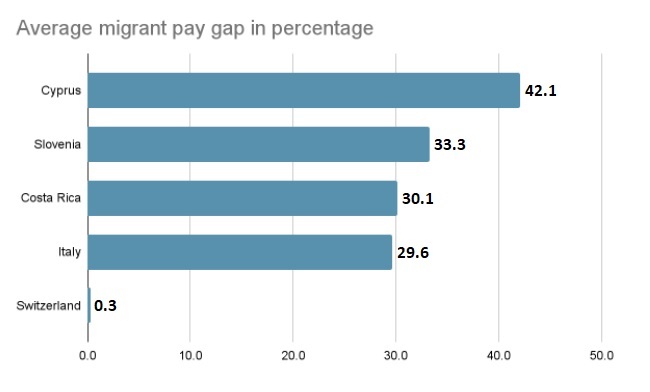
“Reduced Inequalities” is the topic of this unit.



Let’s get started.




| 1. | Why is the Internet essential in today’s digital age? |
| The Internet is essential in today’s digital age because ____________. |


| 2. | Did you do your research on the sub textbook? Did you find the activity for infrastructure issues? Please tell me what you feel about it. |




In the next part, we are going to learn about “Reduced Inequalities”.
次のパートからは、「人や国の不平等をなくそう」について学習を進めましょう。

| 1. | Where is Germany? A, B or C? |
| The answer is _________. |



| 2. | What can you see in the pictures? Please describe as many as you can from each picture. |
 |
 |
| Answer: |





 |
disability ハンディキャップ、不利な条件
More programs are helping people with disabilities receive equal rights.
|
 |
labor 労働者
Every company must follow the labor laws.
|
 |
hire 雇う、雇用する
Some nations prefer to hire migrant workers.
|
 |
pension 年金
When compared to men, most elderly women receive a lower pension.
|




| 1. | _______________ should not get in the way of equality for all. |
| 2. | Every employee deserves equal _______________ rights. |
| 3. | The _______________ process in some companies are becoming stricter. |
| 4. | The elderly depend only on their _______________ to access basic needs. |




Then, let’s move on to the next part.


Inequality affects migrant labor as well. They are more likely to work in lower-skilled and lower-paid jobs. Because of the discrimination during the hiring process, the job does not match their education and skills.
Additionally, a report by the Centre for Ageing Better shows that older women are more likely to be poor. Women tend to get lifetime lower pay and unequal working conditions.



| 1. | According to the graph, which country has the highest migrant pay gap? |
| Answer: |


| 2. | What does the report by the Centre for Ageing Better show? |
| Answer: |


The Takaful and Karama programs “Solidarity and Dignity” began in Egypt in 2015. It gave families financial assistance in exchange for their children staying in school and receiving good health care. Poor citizens over the age of 65 have also benefited from the program, which provides them with tiny monthly pensions. More than 10% of Egypt’s population benefited from the initiative.



| 1. | What is the role of social protection? |
| Answer: |


| 2. | What has the Takaful and Karama program provided to families in Egypt? |
| Answer: |






| 1. | If your salary was lower than others because of your nationality or gender, what would you feel? |
| Answer: |


| 2. | What kind of life do you want to have when you are old? Do you need to make any preparations? |
| Answer: |




